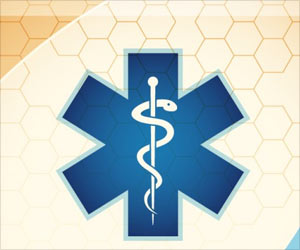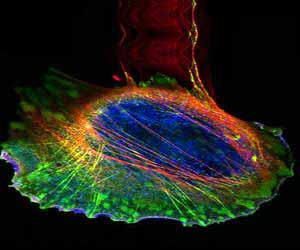Gene expression profiling, a new tool can detect lymphomas such as diffuse large B-cell lymphoma faster. This tool helps identify and treat high-risk patients who do not respond to standard treatments.
- A new tool called gene expression profiling can detect dangerous lymphomas like diffuse large B-cell lymphoma (DLBCL) faster than previous methods
- This will enable the quick identification of high-risk patients who do not respond to standard chemotherapy
- This could help prevent many deaths in this non-responder group by timely institution of new advanced therapies
Read More..
What is Diffuse Large B-Cell Lymphoma (DLBCL)?
Diffuse large B-cell lymphoma (DLBCL) is an aggressive (fast growing) non-Hodgkin lymphoma (NHL) that affects the B-lymphocytes and is the most common type of NHL prevalent worldwide. The B-lymphocytes are a sub-class of white blood cells that undergo maturation in the bone marrow and make antibodies that help to fight infections. The annual incidence of DLBCL is 7-8 cases per 100,000 people in UK and USA.DLBCL generally occurs in older age and the mean age of diagnosis is around 70 years. It can occur inside the lymph nodes (intra-nodal) or outside the lymph nodes (extra-nodal), literally in any organ of the body. Although, this lymphoma is highly aggressive, it is potentially curable. It is currently treated by chemotherapy, consisting of four drugs termed “R-CHOP” – Rituximab, Cyclophosphamide, doxorubicin Hydrochloride, vincristine (Oncovin), and Prednisolone.
What is Gene Expression Profiling?
Gene expression profiling is a robust microarray-based technique that provides high-throughput analysis of gene expression of tens of thousands of genes simultaneously. This technique can be used to compare the gene transcription in cancer cells versus normal cells. This enables the identification of genes that are overexpressed or underexpressed in cancers.Gene expression profiling can provide crucial information about the aggressiveness of a tumor, including biomarkers tracing disease progression and its response to treatment. It also provides information about potential therapeutic targets, as well as sensitivity and resistance to various chemotherapies. This is helpful for predicting the outlook or prognosis.
What Did the New Study Discover?
Although, many lymphoma patients respond to existing treatments, there is a sizeable fraction who don’t respond to these therapies. Gene expression profiling has been able to identify these non-responders. Analysis of the DNA (deoxyribonucleic acid) and RNA (ribonucleic acid) of the tumor cells from 928 DLBCL patients, who participated in a clinical trial, revealed that a proportion of the patients didn’t respond to standard chemotherapy.The researchers indicated that the new technique enabled the detection of twice as many of these patients as those detected by previous techniques.
Gene expression profiling enabled the identification of molecular high-grade (MHG) patients, by looking at the expression patterns of every one of the 20,000 genes present in the genome of a single human cell. The data generated from the 928 patients was analyzed by complex computer modeling by harnessing the power of Bioinformatics.
It should be noted that patients with MHG lymphoma have a three-year survival rate of only 37 percent after standard chemotherapy, compared to 72 percent for other grades of tumor.
Expert Comments
Professor David Westhead, MA, DPhil, from the Astbury Center for Structural Molecular Biology, University of Leeds, UK, and one of the senior authors, indicated that the study identified which patients would be at a higher risk after receiving standard treatment. This accounted for 10 percent of sufferers, which represented a significant proportion.Professor Ming-Qing Du, from the Division of Cellular and Molecular Pathology, University of Cambridge, UK, another senior author, said: “By identifying the molecular high grade group we have found that the number of people who have a high chance of their lymphoma responding poorly to existing treatment is double what we expected. This should be a spur for pathologists to urgently re-assess the way we make the diagnosis, so that appropriate therapy can be tailored to the individual.”
Professor Peter Johnson, MA, MD, FRCP, from the Faculty of Medicine, University of Southampton, UK, and the study’s third senior author, said: “At the moment the standard treatment for this type of lymphoma is to use the R-CHOP combination of drugs. For patients with molecular high grade lymphoma this may not be the best approach, and we need to make sure we identify them early on, so that we can consider different forms of treatment. At the moment we can use more intensive chemotherapy, but by understanding the biology better we hope we can test more selective treatments with targeted agents.”
Dr. Alasdair Rankin, Director of Research at Bloodwise, UK’s leading blood cancer research charity organization, said: “This important research is tackling the challenge of accurately identifying lymphoma patients who will and won’t respond well to standard drugs. The next step will be to develop this approach for use in the National Health Service (NHS), so that more lives can be saved.”
Funding Source
The study was funded by Bloodwise, UK under its Precision Medicine in Aggressive Lymphoma Program.Reference:
- Molecular high-grade B-cell lymphoma: Defining a poor-risk group that requires different approaches to therapy - (http://ascopubs.org/doi/full/10.1200/JCO.18.01314)
Source-Medindia













